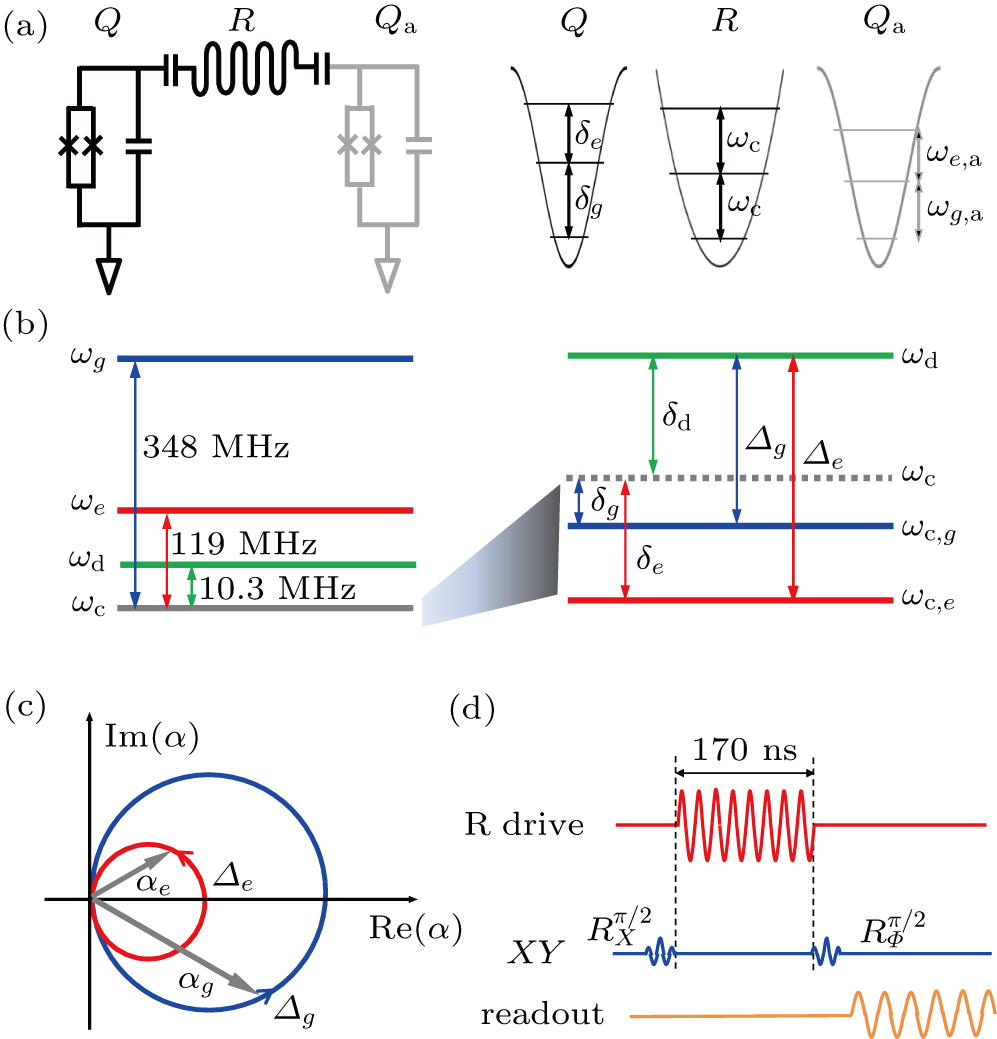Observation of geometric phase in a dispersively coupled resonator-qutrit system
Project supported by the National Basic Research Program of China (Grant No. 2014CB921201) and the National Natural Science Foundation of China (Grant Nos. 11434008 and 11574380).
(color online) Experimental layout. (a) Device schematic showing two Xmon qutrits coupled to a resonator in the middle (left), and the corresponding potential-well landscapes and energy levels (right). (b) Energy level arrangement of the resonator and the test qutrit ignoring their interaction (left), and the resonator’s conditional frequency shifts due to the qutrit’s dispersion (right). The microwave drive with a tone ωd is detuned from ωc by an amount δd. The dispersive coupling to the qutrit shifts the resonator frequency by an amount δg (δe), and hence the effective drive-resonator detuning is Δg ≡ ωd − ωc,g = δd − δg (Δe ≡ ωd − ωc,e = δd − δe) for the qutrit state |g⟩ (|e⟩). (c) Ideal resonator’s phase-space trajectories. The resonator, initially in its vacuum state, is displaced by the microwave drive along a circular loop in its phase space with the radium Ω/Δg (Ω/Δe) and the angular velocity Δg (Δe) for the qutrit state |g⟩ (|e⟩), where Ω is the drive amplitude. When the resonator traverses the loop once, it will acquire a geometric phase that is proportional to the enclosed phase-space area. When Δg/Δe = kg/ke, with kg and ke being integers, at time T = 2π (kg − ke)/(Δg − Δe) the resonator makes a cyclic evolution and returns to the vacuum state no matter whether the qutrit is in the state |g⟩ or |e⟩; however, it acquires different geometric phases for these two qutrit states. (d) Ramsey sequence. The geometric operation, which is achieved by the combination of the microwave driving pulse (red sinusoid) and the dispersive resonator-qubit coupling, is sandwiched in between two π/2 qubit rotations (blue sinusoids) whose rotation axes differ by an angle Φ. The geometric phase difference β is manifested in the test qubit’s Ramsey interference, obtained by a dispersive measurement using a 700 ns-long microwave pulse (light brown sinusoid).
